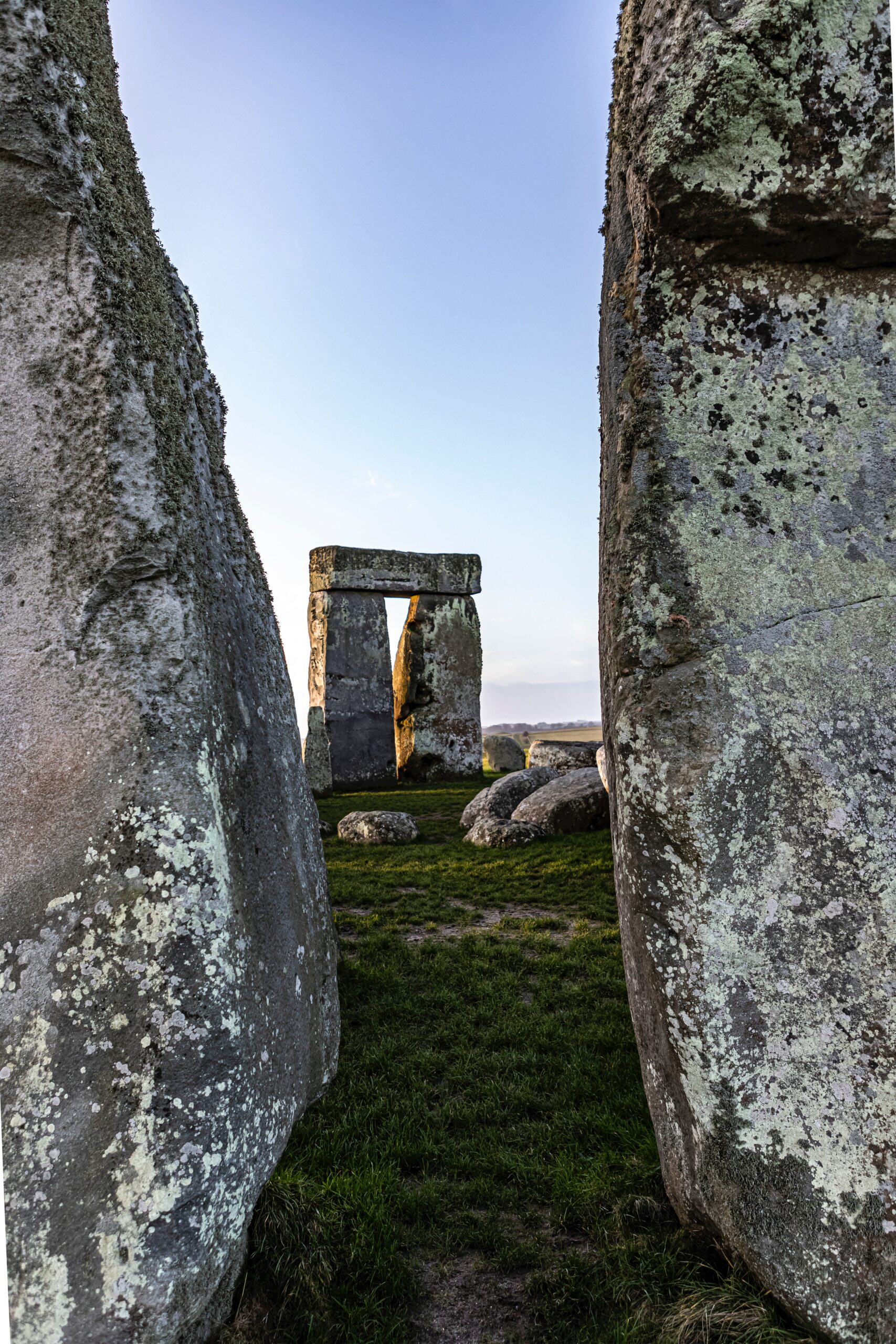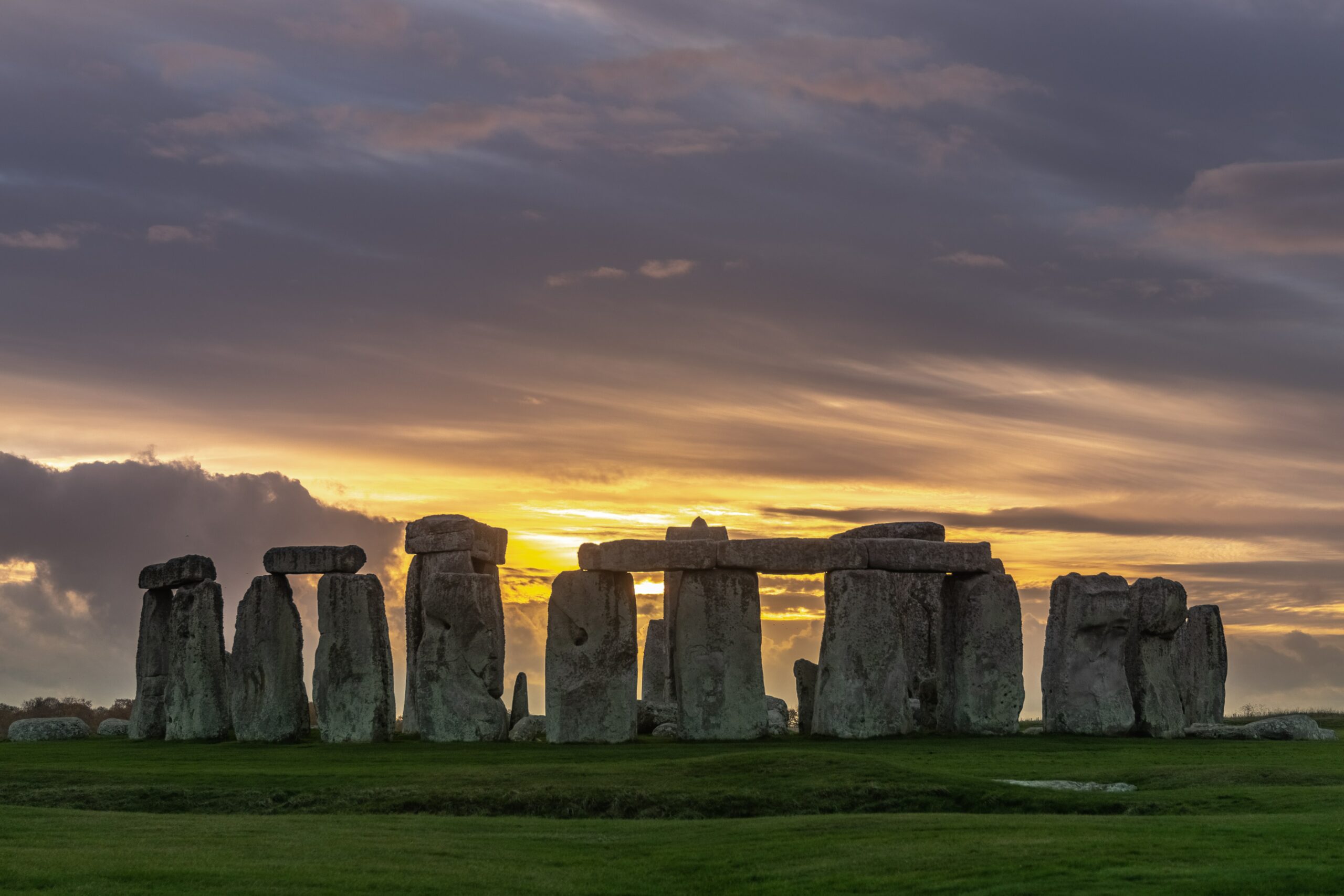Stonehenge
The video focuses on sunset evening as well as sunrise views of Stonehenge.
Britain’s
World Heritage Sites
Unique boulder landscape
In the United Kingdom, Stonehenge is a world-famous prehistoric site on the Amesbury Plain in Wiltshire. Stonehenge is estimated to have been built between about 3000 and 2000 BC, making it one of the oldest structures in the world. This unique Stonehenge is constructed in the shape of a ring facing roughly in the direction of sunrise at the summer solstice and sunset at the winter solstice, suggesting that it may have played an important astronomical role in prehistoric times.Stonehenge consists of some 100 huge sandstone and volcanic rocks neatly arranged in a large circular structure. The circle consists of 30 upright stones with 30 beams on top, five pairs of large ‘three-stone structures’ (two upright stones supporting one beam) and a ring of 60 small bluestones.
Photo by K. Mitch Hodge on Unsplash
Outstanding value of Stonehenge
According to Unesco[3], Stonehenge is the most architecturally complex prehistoric stone circle in the world, Stonehenge includes the Avenue, the Cususus, the Durrington Wall, the Wooden Formation, and the densest burial complex in Britain. It’s design and unique engineering are unrivalled, featuring massive horizontal stone lintels covering the outer circle and the three stones, locked together by carefully shaped joints. It is characterised by the unique use of two different types of stone (bluestones and sarsens), their size (the largest weighing more than 40 tonnes) and the distances over which they were transported (up to 240 kilometres).
The scale of some of the monuments around Stonehenge is also staggering: Stonehenge and the Avenue are both around 3 kilometres long, while Durrington Walls is the largest known Stonehenge in the UK, with a diameter of around 500 metres, demonstrating the ability of prehistoric man to conceive, design and construct features of immense scale and complexity.
Stonehenge contains major Neolithic and Bronze Age monuments, reflecting the creative genius and technological skills inscribed in the heritage.
· The astronomical significance of Stonehenge is still being explored.
· The Neolithic sites near Stonehenge are an unrivalled testament to prehistoric times.
What made Stonehenge?
Origin
It is speculated that around 3000 BC the earliest Stonehenge may have been a simple cemetery and place of worship, consisting of a mound and a circular trench. The trench was approximately 100 metres in diameter and was surrounded by 56 pits known as Aubrey Holes. Antler fragments and cattle bones found in these pits have confirmed the date of this phase by carbon-14 dating. At around 2600 BC. During this phase, bluestones began to be transported to this site from the Preseli Mountains in Wales, some 240 kilometres from Stonehenge. These bluestones were probably initially set in a number of Aubrey stone pits, forming a circular or double circular layout.
Between 2600 and 2400 BC, a phase that was the high point of Stonehenge’s construction, work began on a stone ring consisting of 30 upright sandstone monoliths with 30 beams above them, as well as five pairs of internal megalithic frames. These megaliths were brought in from about 32 kilometres from Stonehenge. At the same time, the bluestones were rearranged to form an inner ring and a horseshoe arrangement. This phase may also have included the construction of the 3-kilometre-long Stonehenge Avenue. Between 2400 BC and 2200 BC, during this phase, the bluestones were moved again to form a circle and a horseshoe arrangement, corresponding to the layout of the sandstone megaliths. Some of the bluestones may have been destroyed and some may have been moved out of Stonehenge.
The stones — of Stonehenge
Bluestones: Bluestones are stones that take on a bluish-grey colour when wet or polished, and are the earliest stones found at Stonehenge. These stones usually weigh between 2 and 5 tonnes and their origin has been traced back to the Preseli Mountains in Wales, meaning that the stones were transported some 240 kilometres. The bluestones of Stonehenge are mainly housed in a horseshoe-shaped structure in the inner circle and centre.
Sarsen Stones: These large stones are a major part of Stonehenge, often weighing up to 25 tonnes, with the largest stone (known as the ‘Big Main’) estimated to weigh 50 tonnes. These huge sandstone boulders are neatly arranged in an outer circle and form a horseshoe-shaped layout inside. They were collected from the Marlborough Downs, a place about 32 kilometres from Stonehenge.
As to how the stones were transported to Stonehenge, this remains a mystery. Some theories suggest that they may have been transported by manpower, antlers and wooden sledges. Other theories propose that the stones may have been transported close by glaciers and then manually transported to the site. However, nothing has been conclusive to date.

Photo by Hulki Okan Tabak on Unsplash
Climate — of Stonehenge
Spring (March to May): Temperatures gradually increase in spring, with average daytime highs ranging from 11-16 degrees Celsius and nighttime lows from 3-6 degrees Celsius. Rainfall is relatively low during this season.
Summer (June to August): Temperatures in summer are moderate, with average daytime highs of 19-21 degrees centigrade and nighttime lows of 11-12 degrees centigrade. Summer is also the season of high rainfall, but the rainfall is usually evenly distributed and there are no long periods of continuous rainfall.
Autumn (September to November): Temperatures gradually decrease in autumn, with average daytime highs ranging from 16-11 degrees Celsius and nighttime lows from 8-4 degrees Celsius. Rainfall is higher in autumn.
Winter (December to February): Winter temperatures are cooler, but warmer than most of the rest of Europe. Average daytime highs are in the range of 7-8 degrees centigrade and nighttime lows are in the range of 1-2 degrees centigrade. Occasionally, temperatures can drop below freezing and there may be snow.
References
1. Skyscape Online Experience | Discover the Skies above Stonehenge (YouTube)
2. Gray rock formation on green grass field under gray cloudy sky
3. State of Conservation
4. Stonehenge
5. Stonehenge under warm sunlight
6. Gray rock formation on green grass field during daytime
7. Stonehenge experts stunned as scan ‘radically changes’ understanding of ancient monumentThe images used in this website were either taken by the author or obtained under license from Adobe Stock.
The video clips in the pages have been used with permission through English Heritage’s

